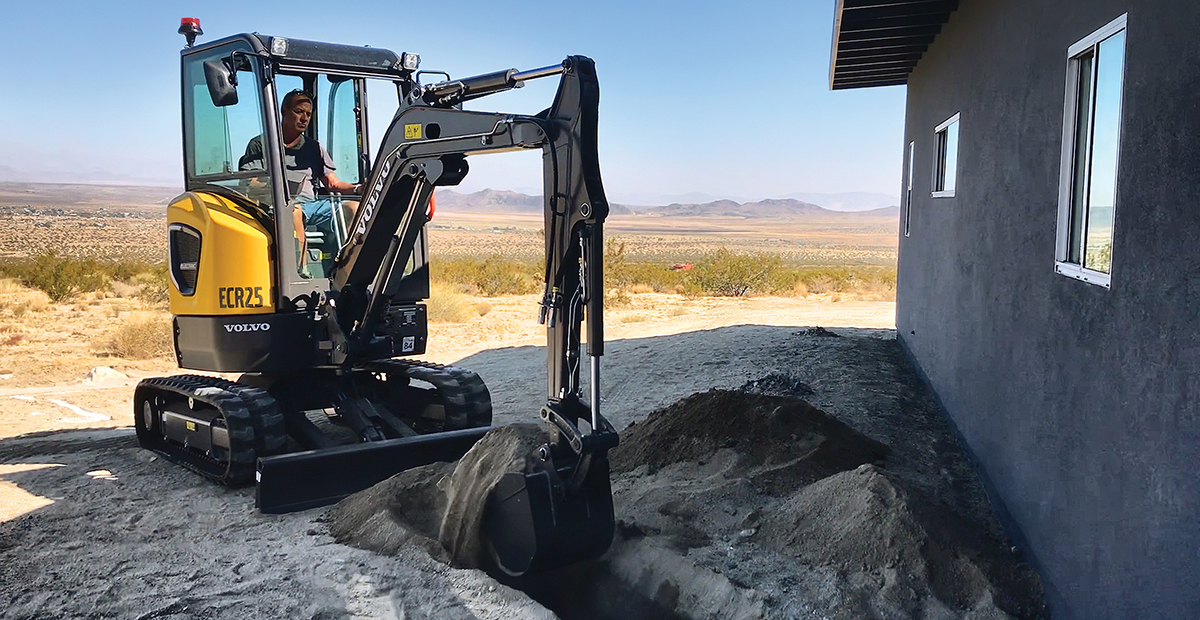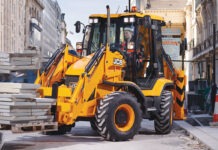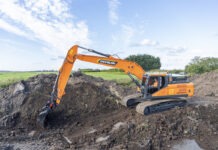The world is moving toward a more environmentally conscious, sustainable future — and that includes the construction industry. As more emissions incentives and zero-emissions levels are set for on-road vehicle improvements, the off-road industry is following suit.
As part of the Volvo Group, we’re uniquely positioned to be able to draw upon our collective expertise to bring this technology to the construction industry.
We recently sat down with Lars Arnold, Electromobility Product Manager for Volvo Construction Equipment (Volvo CE) North America, to get answers to some of the top questions out there related to the emergence of electric equipment on construction jobsites. Here’s what he had to share.
HOW IS SUSTAINABILITY CURRENTLY AFFECTING THE CONSTRUCTION INDUSTRY?
While environmental requirements are more common in Europe, they’re starting to gain ground here in North America. More and more local and state/provincial governments are adopting clean air policies, so if contractors want to win these bids, they need to prove that they’re working with equipment with reduced or zero emissions.
Also, some jobsites simply require reduced or zero emissions — indoor construction jobs are a great example. Ventilation poses a problem as diesel-powered equipment emits exhaust fumes. Indoor projects can now benefit from the low noise and zero emissions electric machines offer.
AS THE INDUSTRY MOVES TO MORE ELECTRIC MACHINE PRODUCTION, WHAT IS A TOP CONCERN YOU THINK CONTRACTORS SHOULD CONSIDER BEFORE PURCHASING AN ELECTRIC MACHINE?
For most contractors who consider the move to electric machines, the biggest challenge is simply a change in mindset for electric equipment. Customers must have an adequate charging infrastructure in place to ensure machines operate as planned. While a 110-volt set up will charge the units over time, a 240-volt setup is necessary to charge the machines quickly.
And for remote jobsites, a solar array may be necessary to provide power when an electric grid isn’t an option.
PERFORMANCE IS LIKELY TO BE ANOTHER QUESTION PEOPLE HAVE. HOW DO THE ELECTRIC MACHINES COMPARE WITH DIESEL MACHINES?
Power and performance are what make the Volvo CE compact electric machines such great options. Our ECR25 Electric excavator has the exact same digging depth, dump height, break out and tear out forces, and dimensions as its diesel equivalent. The L25 Electric wheel loader has a few slight differences from the diesel version, but nearly all of those are in the electric machine’s favor. Customers will get the performance they expect from these machines.
DO ELECTRIC MACHINES UTILIZE THE SAME NUMBER OF HOURS AS DIESEL MODELS FOR THE SAME TYPE OF WORK?
With diesel construction equipment, operating time is defined by the engine run hours, and a lot of those hours are counted while the machine is at idle. With electric machines, as soon as the operator stops working (for example, a landscaper waiting for pipe to be placed in a trench he’s just dug), the electric motors turn off within a short time period. During this time, no operating hours are being accumulated. So over time, jobs can rack up 10,000 hours on a diesel machine where they might only add 6,000 or 7,000 hours to a comparable electric machine.
HOW ARE EARLY ADOPTERS JUSTIFYING THE HIGHER PURCHASE PRICE FOR AN ELECTRIC MACHINE OVER A DIESEL-POWERED MODEL?
Many of the early adopters aren’t concerned with the cost to be one of the first to use electric machines to explore new business opportunities. For many, they’re looking to potentially make the switch over time so their equipment better aligns with their core values — care for the environment, as an example.
Currently, the cost of electric machines is higher compared with diesel-powered machines, but there are also significant savings to consider in regard to maintenance. That will change as more contractors come on board and make electric machines more commonplace in the construction market — ROI is expected to follow the anticipated trend in the electric automobile market.
But as we’ve already discussed, electric machines will accumulate fewer hours than diesel machines, there are no costs associated with engine maintenance, and they could help contractors as sustainability requirements start being incorporated into RFPs. It’s about more than just purchase price.
WHAT WILL THE FUTURE OF MACHINE CHARGING LOOK LIKE?
In addition to solar arrays and other sustainable methods to maintain a power grid for remote charging, apps will also be developed that show operators the state of charge (SOC) of their machine. From a mobile phone, both owners and operators could check the machine’s location and the SOC, and fleet managers will have the ability to monitor machines remotely to ensure daily productivity goals are met.
As we explore new solutions for machine charging, one potential concept is to have a DC rapid charger, which would charge the machine within a very short period of time. The ECR25 Electric, for example, could be charged within an hour’s time from 0% to 80% — and the L25 Electric within two hours’ time from 0% to 80%.
This is possible because the charging of the battery is linear up to roughly around 80%, then it flattens out and slows down before the full charge is reached to preserve the battery. These are the same charging characteristics as any lithium-ion battery product, such as cell phones or cordless power tools.








